Tokina AT-X 116 PRO DX II AF 11-16 mm f/2.8
5. Chromatic and spherical aberration
Chromatic aberration
Ultra wide-angle lenses usually don’t have any longitudinal chromatic aberration problems, mainly due to their low aperture fastness. The tested Tokina has it more difficult here because of its f/2.8 aperture. Still it fares very well - its defocused images are characterized by barely noticeable colouring.
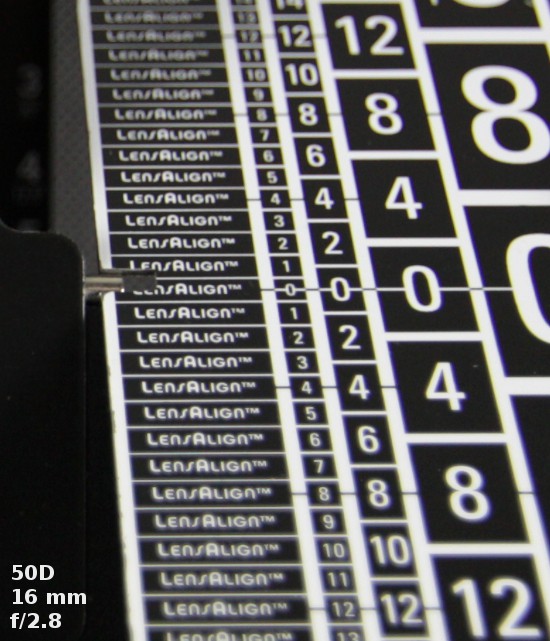 |
Please Support UsIf you enjoy our reviews and articles, and you want us to continue our work please, support our website by donating through PayPal. The funds are going to be used for paying our editorial team, renting servers, and equipping our testing studio; only that way we will be able to continue providing you interesting content for free. |
- - - - - - - - - - - - - - - - - - - - - - - - - - - - - - - - - - - - - - - - - - - - - - - -
The lateral chromatic aberration is a more serious problem, and I do mean serious here. In fact you can describe it with just one word: monstrous.
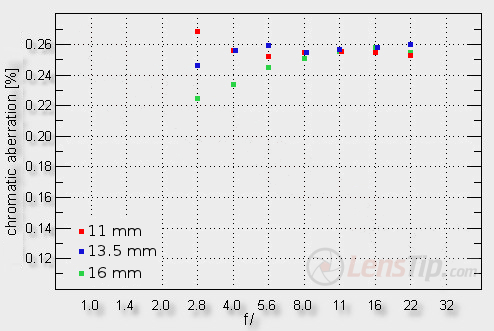
Differences between particular focal lengths are noticeable only near the maximum relative aperture. The aberration changes from 0.22% at 16 mm to 0.27% at 11 mm. After significant stopping down all results are near 0.25-0.26%.
The crop, shown below, proves that the lateral chromatic aberration is high indeed. The picture shows nothing else but a piece of a field for lateral resolution measurement, taken from the centre of the frame (yes!). Only a dozen or so percent of the image circle separates it from the centre itself. Despite such a significant distance from the frame edge you can notice the influence of chromatic aberration without any problems.
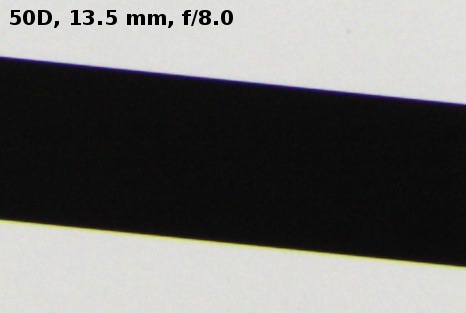 |
Such a high level of that aberration makes assessing another off-axis aberration, the astigmatism, rather difficult. The chromatic aberration influences the lateral border (what can be noticed above) but it doesn’t influence the vertical and radial one. It disturbs the assessment of the astigmatism because the difference between vertical and horizontal MTF 50 function values now is influenced not only by the astigmatism but also by the lateral chromatic aberration.
The crops below show how the lateral chromatic aberration looks on the edge of the frame. Of course you can correct it using a program but the removal of colours won’t bring back the lost resolution.
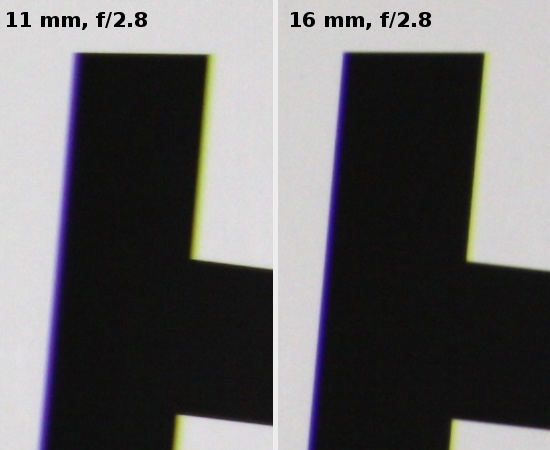 |
A huge level of chromatic aberration is a nightmare of wide angle Tokinas. The predecessor of the tested lens had big problems in this category as well, so did many other instruments (it’s enough to mention here the 12-24 mm, the 16-50 mm or the 16.5-135 mm lenses). It’s high time the producer did something with that aberration because the rivals deal with it much better.
Spherical aberration
The spherical aberration makes itself felt at 16 mm focal length. At the maximum relative aperture the lens can’t hit the chosen point precisely and it has to be micro adjusted by 10 units using the camera’s software. When you pass to f/4.0 aperture you don’t have to micro adjust the lens anymore; the focus shifts to the right position on its own. The problem is not serious, it appears only when you work with small distances. After passing to bigger focal distances, typical for this kind of lens, the depth of field is already so significant that it helps camouflaging that aberration.
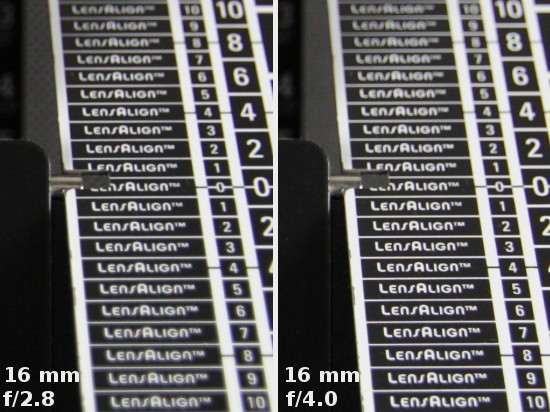 |






